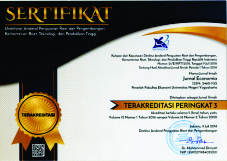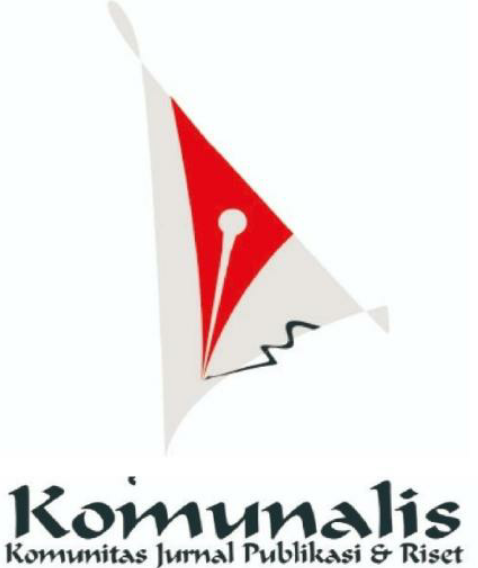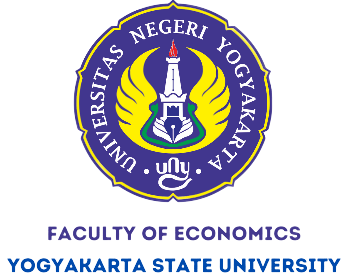Determinan of Exchange Market Pressure in ASEAN Inflation Targeting Countries
Downloads
Abstract: The global economic turmoil on domestic economy was seen in 1997/1998 crisis which led to Thailand, Philippines and Indonesia implementing Inflation Targeting (IT). Empirically, IT was able to reduce foreign exchange market pressure but crisis occurred again in 2008 and large foreign exchange market pressure in 2018. This study uses Exchange Market Pressure (EMP) to examines foreign exchange market pressure in ASEAN IT countries. According to Panday (2015), EMP is percentage change in exchange rate, foreign exchange reserve, interest rate or combinations. This study aims to find determinant of EMP which can be used by monetary authority controlling pressure on foreign exchange market. Panel data analysis during 2010.Q1-2018.Q4 shows that domestic credit has significant negatively effect to EMP which indicates that domestic credit growth is in line with increasing net capital flows. Current account and US inflation have significant negatively effect while real GDP does not have significant.
Keywords: Exchange Market Pressure, EMP, Exchange Rate, Monetary Policy
Determinan Exchange Market Pressure Negara Inflation Targeting di ASEAN
Abstrak: Gejolak perekonomian global terhadap perekonomian domestik terlihat pada krisis 1997/1998 yang menyebabkan Thailand, Filipina dan Indonesia menerapkan Inflation Targeting (IT). Secara empiris, IT mampu menurunkan tekanan pasar valas akan tetapi krisis kembali terjadi di 2008 dan tekanan pasar valas yang besar di 2018. Penelitian ini menggunakan Exchange Market Pressure (EMP) untuk melihat seberapa besar tekanan terhadap pasar valas negara IT di ASEAN. Menurut Panday (2015), EMP adalah persentase perubahan nilai tukar, perubahan cadangan devisa, perubahan suku bunga dan atau kombinasinya. Penelitian ini bertujuan ingin mengetahui faktor-faktor apa saja yang memengaruhi EMP sehingga dapat dijadikan masukan bagi otoritas moneter dalam mengendalikan tekanan terhadap pasar valas. Penelitian ini menggunakan analisis regresi data panel periode 2010.Q1-2018.Q4. Penelitian menunjukkan kredit domestik signifikan negatif memengaruhi EMP. Hal ini tidak sesuai teori yang mengindikasikan bahwa pertumbuhan kredit domestik sejalan dengan peningkatan net capital flows. Transaksi neraca berjalan dan inflasi AS berpengaruh signifikan negatif sedangkan PDB riil tidak berpengaruh signifikan terhadap EMP.
Kata kunci: Exchange Market Pressure, EMP, Nilai Tukar, Kebijakan Moneter
Downloads
Akram, G.M. & Bryne J.P. (2015). Foreign Exchange Market Pressure and Capital Controls. Journal of International Financial Markets, Institutions and Money. Doi: http://dx.doi.org/10.1016/j.intï¬n.2015.04.004.
Bank Indonesia. (2008). Neraca Pembayaran Indonesia dan Posisi Investasi Internasional Indonesia: Konsep, Sumber Data dan Metode. Jakarta.
Bank Indonesia. (2008). Laporan perekonomian Indonesia Tahun 2008. Jakarta.
Bank Indonesia. (2013). Laporan perekonomian Indonesia Tahun 2013. Jakarta.
Bank Indonesia. (2017). Perkembangan Ekonomi Keuangan dan Kerja Sama Internasional, Edisi 1 2017. Jakarta.
Bank Indonesia. (2018). Laporan Perekonomian Indonesia 2018. Jakarta.
Dou, X. (2017). Exchange Market Pressure in China: A Re-Examination Based on Girton-Roper Monetary Model. Theoretical Economics Letters, 7, 1306-1317. https://doi.org/10.4236/tel.2017. 75089.
Falianty, T.A. & Andhony, M. (2012). Exchange Market Pressure dan Intervensi Bank Indonesia. Finance and Banking Journal, Vol.14, No.1 Juni 2012.
Furman, J. & Stiglitz J.E. (1998). Economic Crises: Evidence and Insight from East Asia. Brooking Paper on Economic Activity, 2:1998.
Girton, L. & Roper, D. (1977). A Monetary Model of Exchange Market Pressure Applied to the PosGuaratwar Canadian Experience. The American Economic Review, Vol.67 No.4 September 1977, pp. 537-548.
Gujarati, D.N and Dawn C.Porter. (2009). Basic Econometrics. 5th edition. New York: McGraw-Hill/Irwin companies.
Hegerty, S.W. (2013). Principal Component Measures of Exchange Market Pressure: Comparisons with Variance-Weighted Measures. Applied Financial Economics, 23:18, 1483-1495. Doi: https://dx.doi.org 10.1080/09603107.2013.829198.
Hegerty, S.W. (2014). Exchange Market Pressure, Commodity Prices, and Contagion in Latin America. The Journal of International Trade Economic Development: An International and Comparative Review, 23:1, 56-77. Doi: https://dx.doi.org/10.1080/09638199.2012.679292.
Hegerty, S.W. (2018). Exchange Market Pressure, Stock Prices, and Commodity Prices East of the Euro. Journal of Economics and Management. Doi: https://dx.doi.org 10.22367/jem.2018.31.04.
Ozcelebi, O. (2019). Assessment of Asymmetric Effects on Exchange Market Pressure: Empirical Evidence from Emerging Countries. North American Journal of Economics and Finance. Doi: https://doi.org /10.1016/ j.najef.2019.03.016.
Panday, A. (2015). Impact of Monetary Policy on Exchange Market Pressure: The Case of Nepal. Journal of Asian Economics. Doi: https://dx.doi.org /10.1016/ j.asieco.2015.02.001.
Soe, T. (2017). Inflation Targeting and Exchange Market Pressure in Developing Economies: Some International Evidence. Finance Research Letters. Doi: https://dx.doi.org/10.1016/j.frl.2017.09.015.
Tanner, E. (2001). Exchange Market Pressure and Monetary Policy: Asia and Latin America in the 1990s. International Monetary Fund Staff Papers, Vol.47 No.3, pp.311-333.
World Bank. (2019). Thailand Economic Monitor, Harnessing Fintech for Financial Inclusion, Juli 2019. World Bank Group.
www.bot.or.th
www.bps.go.id
www.bsp.gov.ph
www.imf.org















